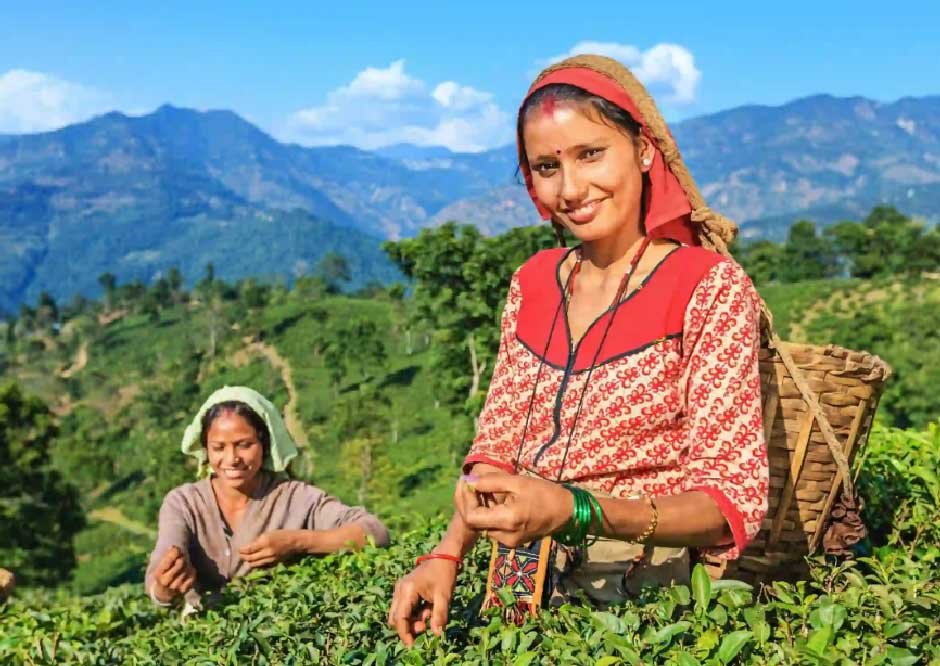Skip to the good bit
ToggleTea is a beloved beverage that has become an essential part of daily life for many. In recent years, more and more tea growers are turning to sustainable methods to ensure that tea production remains viable for generations to come. This blog explores some lesser-known sustainable practices in tea cultivation, emphasizing how these methods help preserve the environment and enhance the quality of tea.
Agroecological Approaches to Tea Farming
In tea cultivation, this means adopting farming practices that are closely aligned with the natural environment. Agroecological approaches consider not only the plants themselves but also the surrounding ecosystem. By working with nature, tea producers can enhance biodiversity and reduce the need for external inputs, such as chemicals and fertilizers.
One important agroecological practice is polyculture, which involves growing a variety of crops alongside tea plants. This creates a balanced environment that supports natural pest control, reduces the spread of disease, and improves soil fertility. By diversifying crops, tea farms can also provide a more secure source of income for farmers, as they are less dependent on a single crop. Supporting sustainable tea practices can also include sourcing your tea from companies that prioritize eco-friendly methods. For example, https://puerhcraft.com is a brand committed to sustainable tea cultivation, offering a range of teas that align with ethical and environmentally responsible practices.
The Role of Cover Crops in Sustainable Farming
While often not harvested for sale, cover crops play a critical role in maintaining soil quality and preventing erosion. For tea farmers, planting legumes, grasses, or other ground-covering plants between tea bushes can improve soil structure, increase organic matter, and prevent weed growth.
Cover crops also help increase nitrogen levels in the soil, which reduces the need for synthetic fertilizers. Over time, the presence of cover crops can enhance the overall health of the tea plants by improving soil moisture retention and promoting root development. This practice not only reduces farming costs but also boosts long-term yields and sustainability.
Reducing Energy Consumption Through Renewable Resources
Tea cultivation, particularly in larger operations, can be energy-intensive. However, sustainable tea farms are increasingly adopting renewable energy sources, such as solar or wind power, to reduce their carbon footprint. Using solar panels to power processing equipment or wind turbines to provide electricity can make tea farms more energy-efficient and less reliant on fossil fuels.
Additionally, some tea farms are exploring the use of bioenergy, which involves using plant material and other organic waste to generate energy. This practice reduces the reliance on external energy sources and minimizes the farm’s overall environmental impact.
Sustainable Tea Packaging: A Growing Trend
The environmental impact of tea farming extends beyond the farm itself to the packaging used to deliver tea to consumers. Sustainable packaging has become a major concern, with many brands shifting away from plastic and opting for biodegradable or recyclable materials. Some tea producers are even using compostable tea bags made from plant-based materials rather than the traditional synthetic ones.
By choosing packaging that reduces waste, tea brands contribute to a circular economy where products are reused and recycled. This practice helps address the issue of plastic pollution, which is a significant environmental challenge in many industries, including food and beverage.
Conclusion
Sustainable tea cultivation is about more than just reducing chemicals or conserving water—it’s about fostering a balance between nature and farming that benefits both the environment and the people who grow the tea. Practices such as agroecology, the use of cover crops, renewable energy, and sustainable packaging all play crucial roles in ensuring that tea remains an environmentally friendly beverage choice. By supporting these sustainable practices, we can all contribute to a greener, healthier future for tea production.







